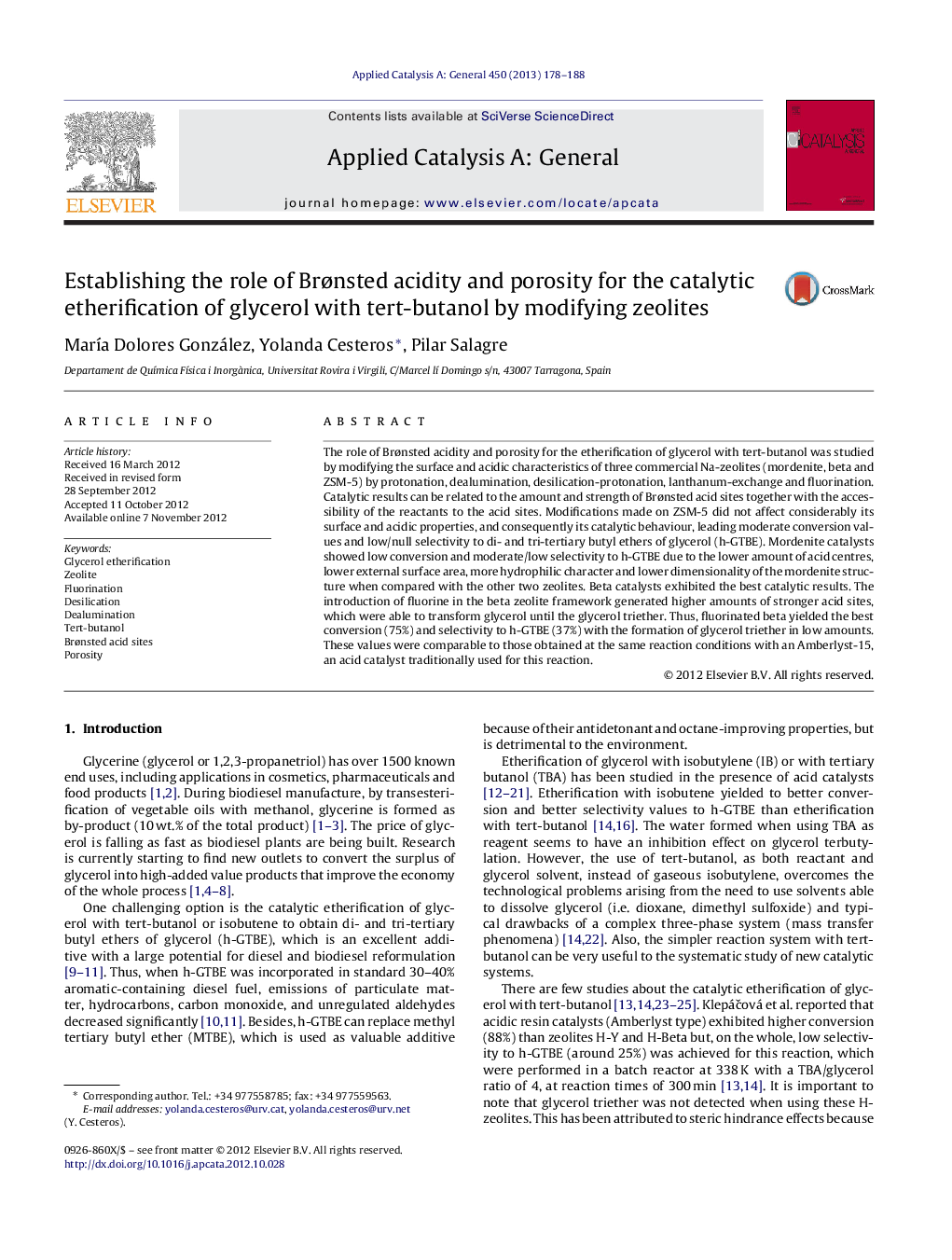| کد مقاله | کد نشریه | سال انتشار | مقاله انگلیسی | نسخه تمام متن |
|---|---|---|---|---|
| 40600 | 45859 | 2013 | 11 صفحه PDF | دانلود رایگان |

The role of Brønsted acidity and porosity for the etherification of glycerol with tert-butanol was studied by modifying the surface and acidic characteristics of three commercial Na-zeolites (mordenite, beta and ZSM-5) by protonation, dealumination, desilication-protonation, lanthanum-exchange and fluorination. Catalytic results can be related to the amount and strength of Brønsted acid sites together with the accessibility of the reactants to the acid sites. Modifications made on ZSM-5 did not affect considerably its surface and acidic properties, and consequently its catalytic behaviour, leading moderate conversion values and low/null selectivity to di- and tri-tertiary butyl ethers of glycerol (h-GTBE). Mordenite catalysts showed low conversion and moderate/low selectivity to h-GTBE due to the lower amount of acid centres, lower external surface area, more hydrophilic character and lower dimensionality of the mordenite structure when compared with the other two zeolites. Beta catalysts exhibited the best catalytic results. The introduction of fluorine in the beta zeolite framework generated higher amounts of stronger acid sites, which were able to transform glycerol until the glycerol triether. Thus, fluorinated beta yielded the best conversion (75%) and selectivity to h-GTBE (37%) with the formation of glycerol triether in low amounts. These values were comparable to those obtained at the same reaction conditions with an Amberlyst-15, an acid catalyst traditionally used for this reaction.
Figure optionsDownload high-quality image (128 K)Download as PowerPoint slideHighlights
► Beta catalysts were more active than ZSM-5 and mordenite catalysts.
► The introduction of fluorine in zeolites led to higher amounts of stronger acid sites.
► The amount and strength of Brønsted acid sites mainly affected glycerol conversion.
► Fluorinated beta allowed the formation of glycerol triether in low amounts.
Journal: Applied Catalysis A: General - Volume 450, 15 January 2013, Pages 178–188